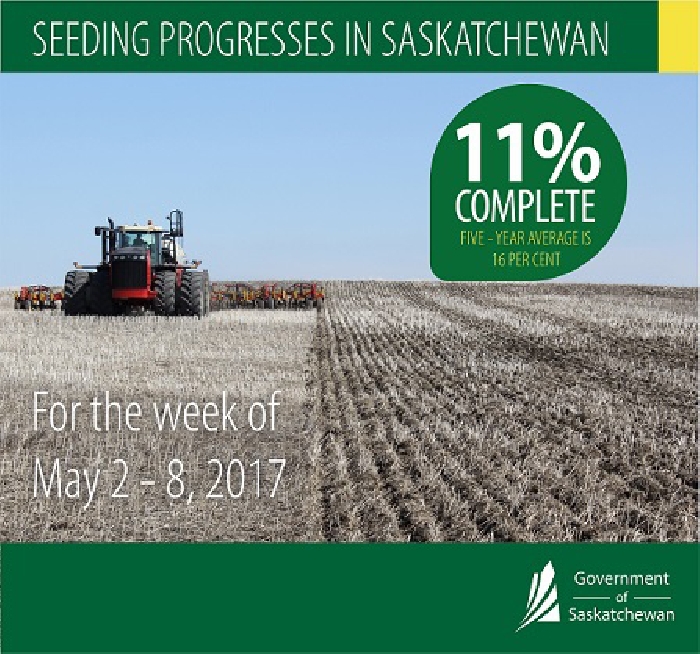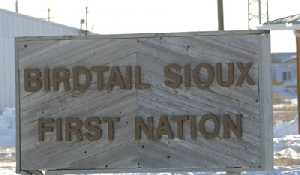Seeding most advance in southeast Saskatchewan
May 12, 2017, 5:09 am


Seeding is most advanced in southeast Saskatchewan, according to Saskatchewan Agriculture's weekly crop report.
Producers in the southeast now have 30 per cent of the crop in the ground, up significantly from three per cent last week. The five-year (2012-2016) seeding average for this time of year is 21 per cent. Field conditions have been optimal for most producers, although strong winds are quickly drying out topsoil moisture and delaying herbicide applications.
The southeast region received small amounts of rainfall last week, ranging from trace amounts to 24 mm in the Moose Jaw area. The Alida area reported 11 mm of rain, the Broadview area 9 mm, the Glenavon area 8 mm, the Indian Head area 4 mm and the Odessa area 3 mm.
The Moose Jaw area has reported receiving the most precipitation (54 mm) in the region since April 1.
Topsoil moisture conditions have slightly deteriorated in the region due to strong winds and warm temperatures. Cropland topsoil moisture is rated as 14 per cent surplus, 72 per cent adequate and 14 per cent short. Hay land and pasture topsoil moisture is rated as 10 per cent surplus, 70 per cent adequate, 19 per cent short and one per cent very short.
A light rain would be welcomed in some areas of the region, while other areas need warm weather to help dry fields up.
Crop District 1B is reporting that 31 per cent of the cropland has surplus topsoil moisture at this time, while CD 2A is reporting that 45 per cent of the cropland is currently short topsoil moisture.
Harvesting of last year’s crop continues in some areas as time permits. Flax stubble is also being burned.
There are concerns in some southern areas that dry field conditions will hinder crop germination and emergence. Farmers are busy seeding, working fields, controlling weeds and moving cattle.
Elsewhere in the province, Eighteen per cent is seeded in the southwest; three per cent in the west-central region; two per cent in the northwestern and east-central regions; and one per cent in the northeast.
Some areas of the province have received a lot more rain than the Moosomin area. The Outlook area reported receiving 40 mm of rain, the greatest amount of precipitation in the province. Fields and roads across much of the province remain wet and are unable to support equipment. Warm and dry weather will be needed to help fields dry before field work can continue.
Provincially, cropland topsoil moisture is rated as 26 per cent surplus, 71 per cent adequate and three per cent short. Hay land and pasture topsoil moisture is rated as 14 per cent surplus, 80 per cent adequate and six per cent short.



































